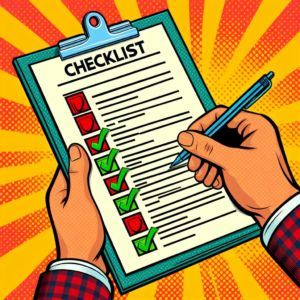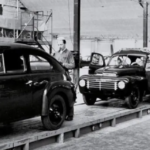Gemba Walks are a very important part of any lean embracing environment. They connect and bring to the forefront the good, the bad and the ugly. This knowledge gathering and change driving tool allows organizations to capture real opportunities through planning and observation. But over the years different versions and methods have developed obscuring the true purpose and method of a Formal Gemba Walk.
Gemba walks should not be confused with Management by Walking (MBW), a different approach in which leaders simply wander about and get involved in what employees are doing nor should a Gemba Walk be confused with a Daily Leader Walk (DLW) in which a team of supervisors and leads walk the facility to review daily work, daily KPI’s, and immediate concerns or issues. The DLW is usually done every day and walks the flow of work in reverse. A true Formal Gemba Walk should have a defined purpose, often associated with a specific concern related to a KPI or an organizational challenge.
The following are the 11 key steps to performing a Formal Gemba Walk:
1. Prepare the Team
It is important that the team members who will be observed and engaged during the walk have a good understanding of what a Gemba walk is and how it will be useful. They should know that the purpose is ultimately to remove obstacles from the process. Talking about the walk before it happens will help everyone feel more comfortable and open to the interaction and ensure that the walk goes as intended.

2. Have a Plan
During a Gemba Walk, the manager asks very in-depth questions about the process being observed. Who is involved? What materials are used? What do you do? How do you know what to do? When does the task take place? What depends on the outcome? MBW or DLW does not involve that degree of depth, nor does it usually have the same focus on asking open ended questions.

In fact, Dr. W. Edwards Deming, often called the Father of Quality Evolution, said in his 1982 work, “Out of the Crisis”, “Management by walking around is hardly ever effective. The reason is that someone in management, walking around has little idea about what questions to ask, and usually does not pause long enough at any spot to get the right answer.” Organizations that effectively use Gemba Walks will create a structure which enables change.
3. Follow the Value Stream
Often, the biggest opportunities for improvement are found where there are handoffs between processes, departments or people. By following the flow of value, these areas with a high potential for waste can be observed and issues uncovered.

It is a good idea to invite employees to suggest processes, shifts, or work areas that might benefit from a Gemba Walk. Not only will this potentially point you to opportunities to improve that you may have missed, but it will also make the process feel like more of a two-way street. Because they’re the ones on the front line doing the work, they are more likely to have insight into the processes and areas that could use another set of eyes. Remember, the value you’re bringing to the table is a fresh perspective on old processes. By asking people where this would be the most helpful, you’re engaging them in the process and making it apparent that you’re there to help, not criticize.
4. Always Focus on Process, Not People
A Gemba walk is not an employee performance evaluation. The purpose is to observe, understand, and ultimately improve processes. The walk should never feel punitive, and it is not the right time to engage in employee task management.

It is helpful to prepare employees at the Gemba by letting them know that you’ll be asking many questions about how, when, and why things are done. You should be clear that you aren’t looking for “right” answers, what you need far more are answers that are honest and complete. If work isn’t being done according to the Standard, you want them to say so and not cover it up. They need to understand that your questions come from a genuine desire to understand and are not accusatory or confrontational in any way.
5. Document Your Observations
Because there’s a lot going on during a Gemba walk and you’ll want to remember it all later, it’s important to bring along tools to log your observations, including:
- A way to log observations – While we risk stating the obvious, a way to jot down your observations is essential because the time to react to what you observe is after your Gemba walk, not during it. You’ll need a way to remember what you saw and thought. Ideally you’ll be able to submit your observations into a continuous improvement platform via a cell phone or tablet so that you can follow up on them later, track their implementation, and record the impact of your Gemba walk. A pen and paper will do in a pinch, but make sure that you still follow up on them afterward.
- A camera – It may be very useful later to browse through a gallery of images or maybe even a few quick bits of video. Be sure to be respectful of any people you might photograph. If cameras are not appropriate for your workplace, some graph paper for sketching out the layout of people and equipment may be useful.
- An open mind – You don’t want your observations to be tainted by preconceived notions. For example, don’t assume that work is being performed to the Standard or that each person performs each task in the same manner.

6. Ask Questions
One of the most difficult things to do on a Gemba walk is to put aside assumptions about why work is done the way that it is. Don’t assume that everything is being done according to the standard. Instead, ask employees why they do things the way they do. Ask about how the work is documented, how they manage exceptions, and why operations are performed in a particular order.
The 5 W’s provide an excellent structure for the questions you want to ask and answer during your Gemba Walk.
- Who – Who are the people involved in the processes that you observe? Who provides input for the processes? Who are the “customers” of the process? Pro tip: You shouldn’t be asking who to blame for problems…
- What – What are the inputs and outputs of the process? What obstacles inhibit flow or produce waste?
- Where – Does the space where the work is performed conform to 5S? Are necessary materials and equipment conveniently located? Do you notice the waste of motion?
- When – Are process inputs available when needed? Is work from this process being pulled through by the next, or do outputs sit idle? Is the waste of waiting observed?
- Why – What value does this work add for the customer?

7. Don’t Suggest Changes During the Walk
A Gemba walk is an opportunity for observation, not action. It may be very tempting to jump straight to solutions or make improvements on the fly, but changes should be made only after a period of reflection. And, when leaders throw solutions at people, you undercut their ability to learn and practice problem solving on their own. An improvement cycle like DMAIC (Define, Measure, Analyze, Improve and Control) or PDCA (Plan, Do, Check, Act) can be helpful in ensuring that any changes made are the right ones that will eliminate the target issue, and we make sure the right people are involved (usually meaning those who are actually doing the work).

8. Walk in Teams
While not every Gemba walk needs to be a team endeavor, bringing along a leader from a different functional area of the organization can be a good way to get another point of view. People who are less familiar with a process might ask a different set of questions that sheds light on the work in a new way.
Who should come along on a Gemba walk? Consider:
- A peer from another department – It is easy to become so conditioned to problems that we see frequently that we don’t even notice them. A second set of eyes, less familiar with the processes and tasks of your team might be very valuable, especially if you take frequent Gemba walks.
- A vendor – If your team uses equipment, consumable products or software, it might be useful to invite the vendor along on your walk. They may be able to suggest best practices or notice errors in how the product is being used. They may even uncover ways that they could improve the product to better fit your needs.
- A customer – This might be controversial, and it certainly isn’t always a good idea, but today’s customers value transparency and they are often interested in seeing how the sausage is made, so to speak. They may also be able to identify things that they value less than you think.
- One of your sales representatives – It is important that the people who pitch your product to customers know how it is created and understand how every part of the process relates directly to customer value.

9. Mix Up the Schedule
We absolutely encourage leaders to mark time on their calendar for Gemba walks, but it shouldn’t be a recurring activity that happens at the same time each month. In order to get a complete sense of what happens in the process, it is a good idea to do Gemba walks at different times of the day, days of the week, and parts of the month.

10. Follow-up with Employees
Sometimes the results of a Gemba walk will be immediately obvious as changes are made or an improvement cycle is started, but even if there will be no immediate action as a result of a particular walk, it is important to follow-up with employees. Share what you have learned and communicate what next steps, if any, will occur.

11. Return to the Gemba
If changes are implemented following a Gemba walk, be sure to return to the Gemba to observe those changes and verify that the desired result has been achieved. KPIs can give you some idea of how well the improvement is working, but nothing is as useful as first-hand observations.

A big objection to Gemba Walks and going back to the Gemba is that people are too busy. My answer to that is that many of the activities that take up so much time can be eliminated by Gemba Walks. You don’t need to send emails back and forth or form a committee to hold a meeting to address many common process or workspace issues. A first-hand look can save many hours of reading second or third-hand accounts about an issue. The human brain processes images way more quickly than text. Anything that speeds your understanding of what’s happening on the front lines reduces the amount of time you have to spend trying to figure it out from afar.
Many of the techniques that employers use to eliminate waste and streamline the flow of value to the customer such as Gemba walks are simple yet incredibly powerful. But simplicity should not lead to complacency. Proper execution is essential for the best results. Sticking with these best practices will help ensure that you come away from each walk with the information you need to make good decisions about how to improve processes and results.
Check out the infographic at http://nerd-central.com/gallery/b-005-lean-tools. Or simple go to the Infographic’s section of the menu, select business and B.005-Lean Tools.




